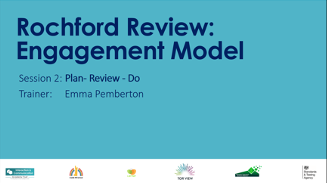Yesterday our Engagement Model Lead Trainer, Emma Pemberton delivered training to Heads, Teachers and school staff from across the North-West, on the Engagement Model.
The Engagement Model is the Assessment used for all learners working below pre-key stage standards. Originally intended to become the statutory assessment from September 2020, implementation has been postponed until September 2021 due to lockdown, with schools using this year as a transition year.
The model is in response to the recognition that progress may not always be linear or quantifiable for learners working at this level. Teachers and those working with pupils should use the Engagement Model ‘areas’ (outlined below) to help inform how they will alter teaching in order to support pupils in meeting their targets. It encourages a personalised teaching approach which builds on individual abilities and responses.

The model uses 5 areas of engagement; these are:
- exploration – whether a pupil can build on their initial response to a new stimulus or activity
- realisation – how the pupil interacts with a new stimulus or activity or discovers a new aspect of a familiar stimulus or activity
- anticipation – how much the pupil predicts, expects or associates a stimulus or activity with an event.
- persistence – whether the pupil can sustain their attention in a stimulus or activity for long enough that they can actively try to find out more and interact with it.
- initiation – how much, and the different ways, a pupil investigates a stimulus or activity in order to bring about a desired outcome.
An Example
P loves watching disco lights circulate around the room, he demonstrates this through head and eye movement, tracking the light flow around the room. He also vocalises at distinct changes in the pattern e.g. when they change colour. You are using a mirror to help P notice their own features. P is not looking at the mirror or vocalising, against our Engagement scale he is showing no engagement. The first thing you need to do is think about how you will get P’s attention focused on the mirror, you could try ‘highlighting’ P’s face by darkening the room and using a soft lamp, his reflection in the mirror should then become more distinct. Note down P’s responses, hopefully he will start to look at the mirror, this demonstrates ‘exploration’ initially this may be fleeting but over time may become more sustained – showing ‘persistence’. It is important to note he may not be as engaged as your example, however what you can then do is continue to make small changes over time until he is demonstrating all of the behaviours you would expect. A reminder that this can take several days or even weeks, learning at this level is much slower than standard learning.
Taking this example further, the mirror can be removed from view and then reappear, this may cause surprise ‘realisation’, it also helps to promote ‘anticipation’ – ‘does P notice the mirror has gone, is he looking for it to reappear – how do you know? Does P then start to call out if the mirror is gone for too long? This shows early ‘initiation’.
For more information, see:
https://www.gov.uk/government/publications/the-engagement-model
https://www.sendgateway.org.uk/blog/tsc-engagement-model
